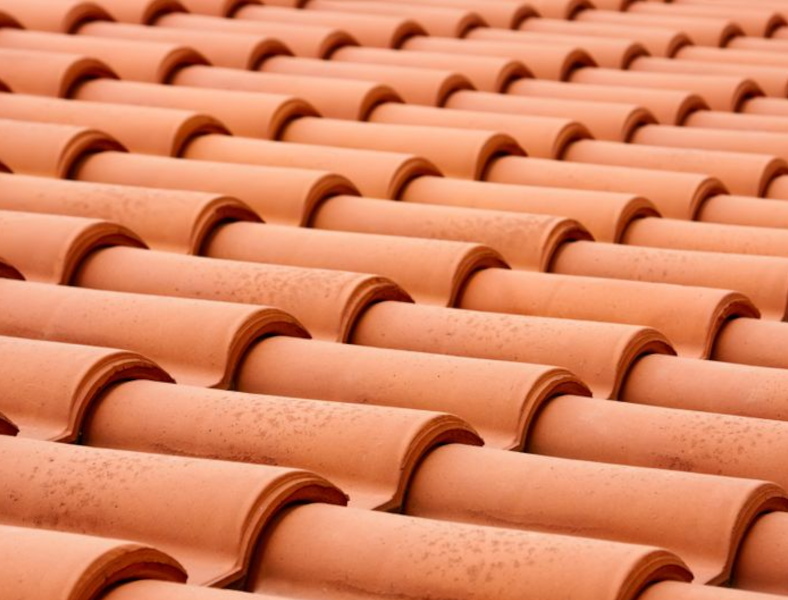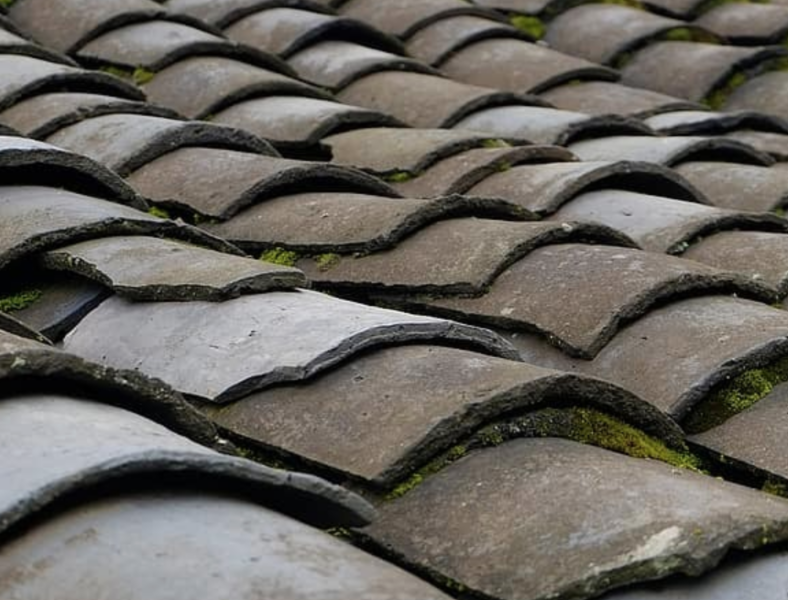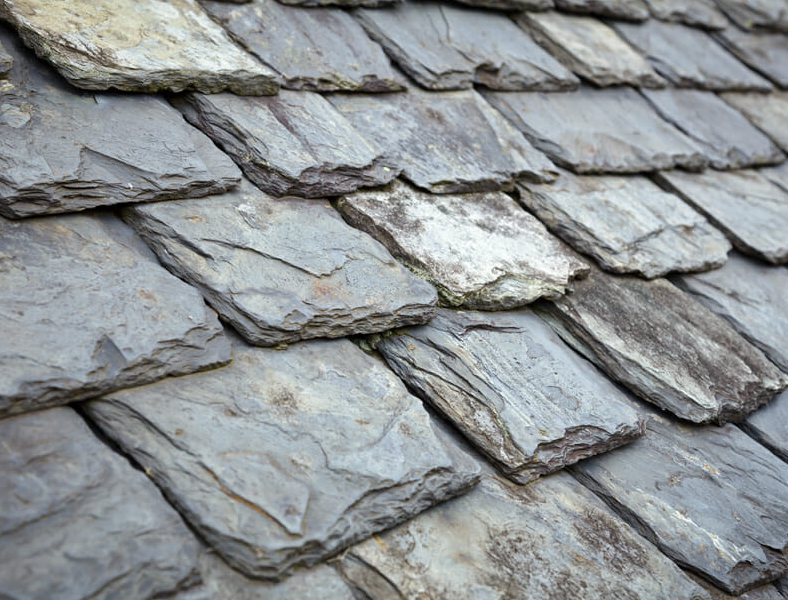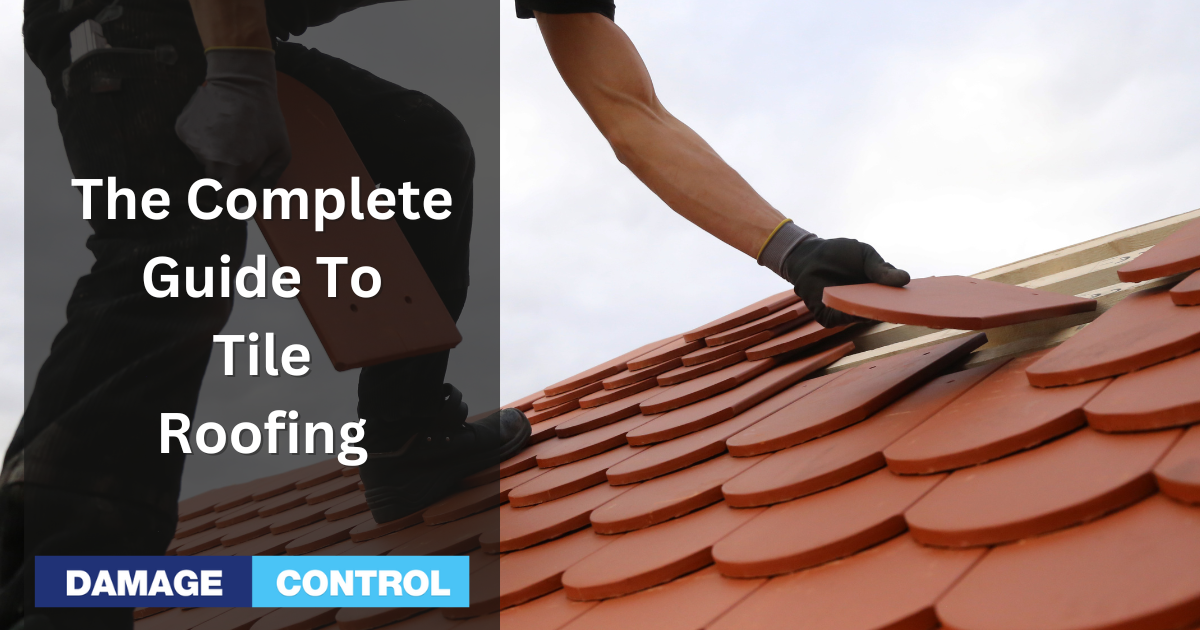Ah, tile roofing! It's got that certain charm. With its rich history, undeniable beauty, and growing popularity, something about it makes you stop and admire it. Elegant and timeless tile roofs have been gracing the skyline for centuries. Their classic appearance and durability make them a favorite for homeowners and contractors alike. Plus, they're eco-friendly and energy-efficient, which is music to our ears in today's environmentally-conscious world.
Tile roofs aren't a new trend, my friends. In fact, they date back to ancient times, with civilizations like the Greeks, Romans, and Chinese all opting for this stylish and practical roofing option. It's no wonder that tile has stood the test of time – it's got the perfect blend of form and function.
Today, tile roofing is making a major comeback, and it's not hard to see why. People are drawn to its unique charm, longevity, and ability to withstand the elements. Plus, with a wide array of materials and styles to choose from, there's a tile roof out there for everyone. So, let's embark on a journey to explore the ins and outs of tile roofing.
Types of Tile Roofs
Clay tile roofs

Oh, the classic clay tile roof! It's been a staple for ages, and it's easy to see why. Let's uncover the benefits of clay tiles, the different types available, and some crucial installation considerations.
Benefits of clay tiles
Clay tiles are a dream come true for homeowners seeking longevity and low maintenance. They're fire-resistant, durable, and can last for a century or more! And if that wasn't enough, clay tiles are also energy-efficient, helping to regulate indoor temperatures and reduce energy costs.
Types of clay tiles
There's no one-size-fits-all when it comes to clay tiles, my friends. You've got options! Some popular types include:
- Flat clay tiles: Sleek and modern, they're perfect for contemporary homes.
- Barrel tiles: Also known as Spanish or mission tiles, they boast a traditional, curved shape.
- Interlocking tiles: Designed to fit together like puzzle pieces, they provide a secure and watertight fit.
Each type offers its unique aesthetic, so it's all about finding the one that speaks to you!
Installation considerations
Proper installation is key to getting the most out of your clay tile roof. A few things to keep in mind:
- Choose a skilled contractor with experience in clay tile installation.
- Ensure your roof structure can support the weight of clay tiles – they're heavier than other roofing materials.
- Take extra care with waterproofing to prevent moisture issues.
With the right approach, your clay tile roof will stand the test of time and look fantastic doing it!
Concrete tile roofs

Now let's talk about concrete tile roofs, another fantastic option for those looking to make a statement. We'll explore the benefits of concrete tiles, the various types available, and some important installation considerations.
Benefits of concrete tiles
Concrete tiles are no slouch when it comes to performance. They're durable, fire-resistant, and able to withstand extreme weather conditions. Plus, they're more budget-friendly than their clay counterparts, making them a popular choice for cost-conscious homeowners. And let's not forget their energy-efficiency, helping to keep your home cozy without breaking the bank.
Types of concrete tiles
Concrete tiles come in a delightful array of styles, shapes, and colors. Some crowd-pleasers include:
- Flat concrete tiles: Smooth and modern, they offer a contemporary look.
- S-shaped tiles: Mimicking the traditional clay barrel tile, they give a nod to classic design.
- Shake-look tiles: Resembling wood shakes, they provide a rustic charm without the maintenance hassle.
The choice is yours – pick a style that complements your home's architecture and your personal taste!
Installation considerations
To make the most of your concrete tile roof, it's crucial to get the installation just right. Keep these tips in mind:
- Select a contractor with a proven track record in concrete tile installation.
- Double-check that your roof structure can handle the weight of concrete tiles, as they're heavier than some other materials.
- Prioritize proper waterproofing to avoid any unwelcome moisture problems.
With attention to detail and the right approach, your concrete tile roof will be a durable, attractive addition to your home.
Slate tile roofs

Last but certainly not least, let's delve into the world of slate tile roofs. We'll uncover the benefits of slate tiles, the different types available, and some essential installation considerations.
Benefits of slate tiles
Slate tiles have long been revered for their natural beauty and impressive durability. They're fire-resistant, low-maintenance, and can last for well over a century – talk about a solid investment! Additionally, slate tiles are eco-friendly, as they're made from a natural material and can be recycled when it's time for a replacement.
Types of slate tiles
Slate tiles come in a delightful range of colors, textures, and thicknesses, allowing you to create a truly unique look. Some popular options include:
- Uniform slate tiles: Offer a clean, consistent appearance for a polished look.
- Textured slate tiles: Provide a more rustic, natural aesthetic with their varied surfaces.
- Graduated slate tiles: Feature a mix of thicknesses and sizes, creating a visually striking pattern.
With so many choices, finding the perfect slate tile for your home is a breeze!
Installation considerations
Slate tile installation requires skill and expertise, so keep these factors in mind:
- Choose a contractor with a solid background in slate tile installation.
- Verify that your roof structure can support the weight of slate tiles, as they can be quite heavy.
- Proper waterproofing is crucial – don't skimp on this step!
With the right installation, your slate tile roof will be a stunning, long-lasting addition to your home.
Comparing tile roofing materials
Now that we've explored clay, concrete, and slate tile roofs, let's do a quick comparison. Each material has its perks:
- Clay tiles offer a timeless look and incredible durability.
- Concrete tiles are budget-friendly and resilient in extreme weather.
- Slate tiles provide a natural beauty and impressive longevity.
Ultimately, the best tile roofing material for you will depend on your budget, personal style, and specific needs. No matter which option you choose, you're sure to end up with a stunning and functional roof.
Tile Roof Colors and Styles
When it comes to tile roofing, the sky's the limit in terms of colors and styles. Let's explore traditional and modern styles, how to customize your tile roof, and where to find inspiration for your dream design.
Traditional tile roof styles
Traditional tile roofs are all about elegance and timeless appeal. Classic options include:
- Spanish or mission style: Featuring curved, barrel-shaped tiles, this style evokes old-world charm.
- Mediterranean style: With warm, earthy colors and a mix of flat and curved tiles, it's perfect for creating a cozy, inviting atmosphere.
- French style: Combining flat tiles with elegant patterns, this option adds a touch of sophistication to any home.
These tried-and-true styles have stood the test of time for a reason – they're stunning!
Modern tile roof styles
For those seeking a contemporary vibe, modern tile roof styles have got you covered. Some popular choices include:
- Flat tiles: With their sleek, clean lines, flat tiles offer a minimalist aesthetic that's perfect for modern architecture.
- Metal-look tiles: Mimicking the appearance of metal roofing, these tiles provide a cutting-edge look without sacrificing durability.
- Solar tiles: Integrating solar technology, these innovative tiles allow you to harness the power of the sun while maintaining a stylish appearance.
Modern tile roofs prove that you don't have to sacrifice style for performance.
Customizing your tile roof
One of the joys of tile roofing is the ability to customize it to your heart's content. Mix and match colors, textures, and patterns to create a one-of-a-kind look that reflects your personality. Plus, many manufacturers offer custom glazes and finishes, allowing you to achieve the exact shade and sheen you desire.
Finding inspiration for your tile roof design
If you're feeling overwhelmed by the endless possibilities, don't fret! Look for inspiration in architecture magazines, home improvement blogs, and even your own neighborhood. Take note of the designs that catch your eye and discuss them with your contractor. Together, you can create a tile roof that's uniquely yours and utterly fabulous.
Tile Roof Durability and Lifespan
One of the major selling points of tile roofing is its remarkable durability and lifespan. But what factors affect longevity, what are some common problems, and what should you consider when it comes to repairs and replacements? Let's find out!
Factors affecting tile roof longevity
While tile roofs are known for their impressive lifespan, several factors can influence their longevity:
- Material: Clay, concrete, and slate tiles all have different lifespans, with slate generally outlasting the others.
- Quality: Higher-quality tiles will typically last longer than their lower-quality counterparts.
- Installation: Proper installation is crucial for ensuring your tile roof stands the test of time.
- Maintenance: Regular maintenance, such as cleaning and inspecting for damage, helps extend your tile roof's life.
By addressing these factors, you can ensure your tile roof stays in tip-top shape for decades to come.
Common tile roof problems
Even the most durable tile roofs can encounter issues. Some common problems include:
- Cracked or broken tiles: Impact from debris or extreme temperature fluctuations can cause tiles to crack or break.
- Leaks: Improper installation or damaged underlayment can lead to leaks.
- Moss and algae growth: Over time, moisture and shade can promote the growth of moss and algae on your tile roof.
Staying vigilant and addressing these issues promptly can help maintain your tile roof's longevity and appearance.
Repair and replacement considerations
When faced with tile roof problems, consider the following:
- Consult a professional: A skilled contractor can assess the issue and recommend the best course of action, whether it's a simple repair or a full replacement.
- Match materials: If you need to replace tiles, try to match the original material and style for a seamless appearance.
- Weigh the costs: Sometimes, investing in a full replacement might be more cost-effective in the long run than continually patching up issues.
With the right approach, your tile roof will continue to serve you well and look fantastic for years on end.
Tile Roof Cost
While tile roofs are undeniably beautiful and durable, they can also come with a higher price tag than some other roofing options. Let's explore the factors that affect tile roof pricing, how to estimate your project's cost, and some tips for saving money along the way.
the national average cost for a tile roof in the United States can range from $15,000 to $40,000 or more, depending on the materials, labor, and size of the roof. The cost per square foot typically ranges from $10 to $20. However, these figures may change based on where you live, so it's best to consult current sources and local contractors for the most up-to-date and accurate pricing information in your area.
Factors affecting tile roof pricing
Various factors can influence the cost of your tile roof project, including:
- Material: Clay, concrete, and slate tiles each come with their own price points, with slate typically being the most expensive.
- Quality: High-quality tiles will generally cost more than lower-quality alternatives.
- Size and complexity: The larger and more intricate your roof, the higher the cost will be.
- Labor: Installation costs can vary depending on the contractor's experience and your location.
Considering these factors can help you better understand the potential cost of your tile roof project.
Estimating your tile roof cost
To get a rough estimate of your tile roof cost, follow these steps:
- Determine the square footage of your roof by measuring its length and width.
- Multiply the square footage by the cost per square foot for your chosen tile material. You can find this information online or by consulting with a contractor.
- Add labor costs, which can vary depending on your location and the complexity of your project. A contractor can provide a more accurate quote.
Remember that this is just a ballpark figure – actual costs can differ based on various factors.
Saving money on your tile roof project
While tile roofs can be pricey, there are ways to save money on your project:
- Shop around: Get quotes from multiple contractors to find the best deal.
- Consider alternative materials: If slate is out of your budget, consider more affordable options like concrete or clay.
- Time it right: Roofing projects can sometimes be cheaper during the off-peak season, so consider scheduling your project during a less busy time of year.
By being smart and resourceful, you can make your dream tile roof a reality without breaking the bank.
Frequently Asked Questions
How long do tile roofs last?
Tile roofs are known for their exceptional longevity. Clay and concrete tiles can last anywhere from 50 to 100 years, while slate tiles can last well over a century with proper maintenance.
Can I walk on my tile roof?
Walking on a tile roof is not recommended, as it can result in cracked or broken tiles. If you need to access your roof, it's best to call a professional who has the proper equipment and experience to avoid damaging your tiles.
What is the best material for a tile roof?
The best material for a tile roof depends on your budget, personal style, and specific needs. Clay, concrete, and slate tiles all have their own unique benefits and drawbacks, so consider each option carefully before making your decision.
Are tile roofs energy efficient?
Yes, tile roofs are energy efficient due to their natural insulating properties. They help keep your home cooler in the summer and warmer in the winter, which can result in lower energy bills.
How do I clean my tile roof?
Cleaning your tile roof should be done carefully to avoid damaging the tiles. It's recommended to use a gentle, low-pressure wash and avoid harsh chemicals. If you're unsure, it's best to consult a professional who specializes in tile roof maintenance.
Conclusion
Choosing a tile roof for your home comes with numerous benefits, from its stunning appearance to its impressive durability. With so many materials, colors, and styles to choose from, you can create a truly unique and lasting addition to your home. Ultimately, the right tile roof depends on your personal preferences and needs, so take your time to explore your options and make an informed decision.
If you're looking to further educate yourself on roofing options and related topics, be sure to check out our information series on roofing, where you'll find articles on various roofing materials and their benefits. Dive into the world of TPO roofing to learn about its advantages, or explore the vibrant colors of polycarbonate roof panels to give your home a unique touch. And, if you're curious about the lifespan of different roof types, our comprehensive guide on how long different roof types last has got you covered.
Armed with this knowledge, you'll be well-equipped to make the best decision for your home and enjoy the lasting beauty and protection of a tile roof for years to come.

